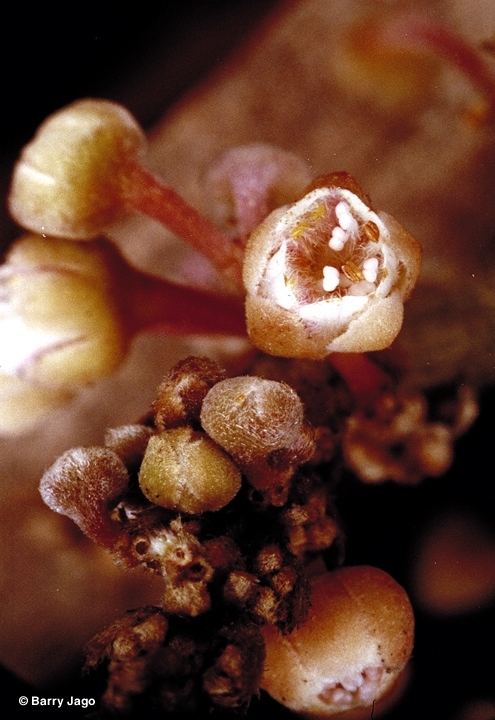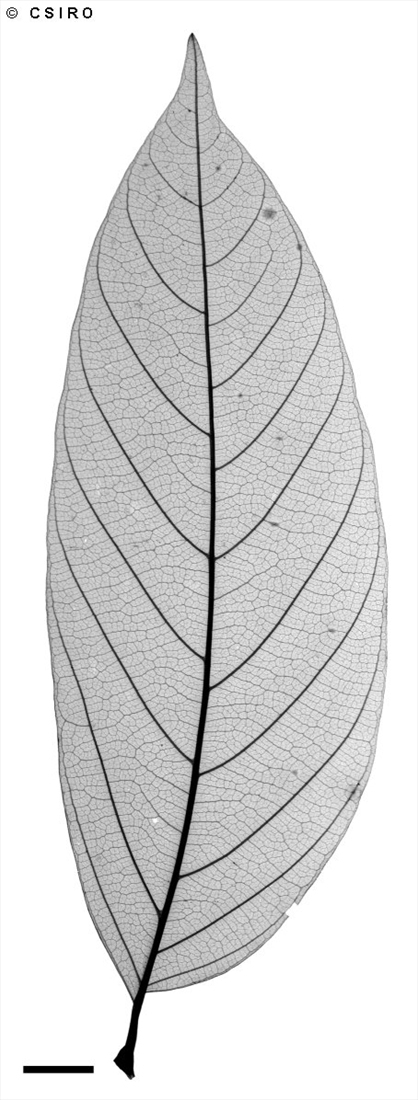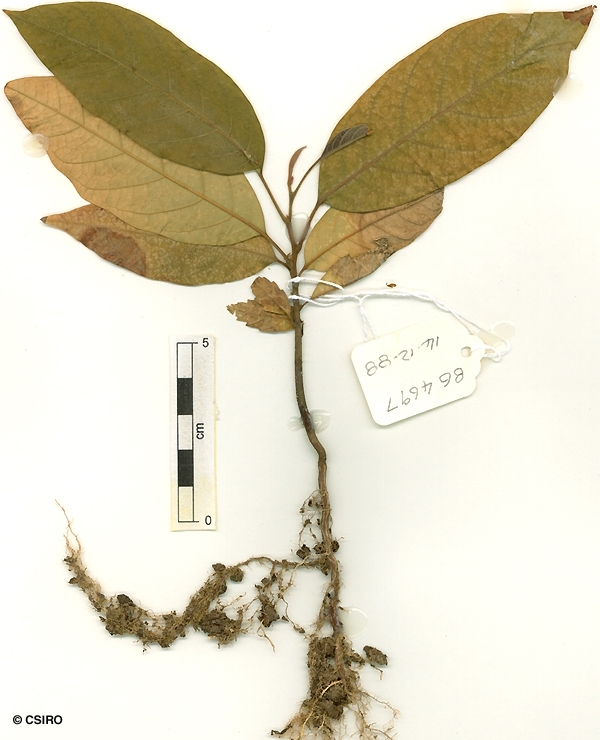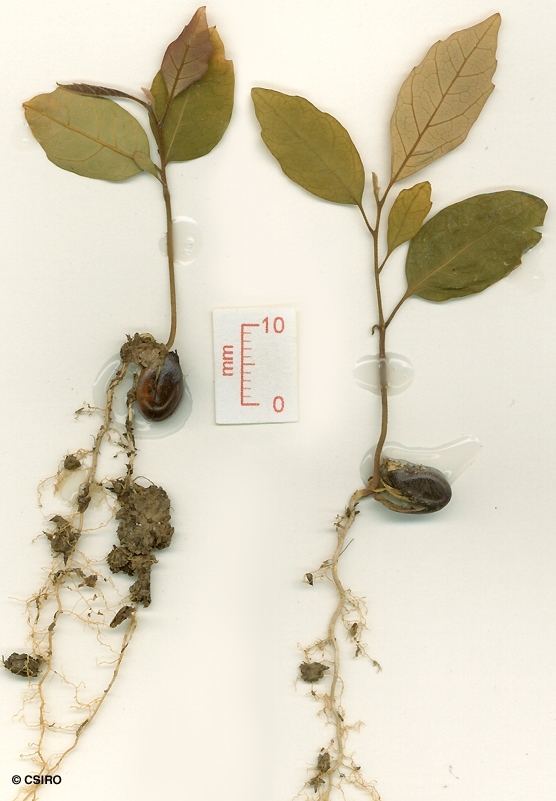Australian Tropical Rainforest Plants - Online edition
Cnesmocarpon dasyantha (Radlk.) Adema






Adema, F. (1993) Blumea 38(1): 197.
Pink Tamarind; Tamarind, Pink; Fern Leaved Tamarind; Tamarind, Fern Leaved
Bark surface often minutely roughened on larger trees but not enough to move it out of the nondescript category. Usually grows into a small tree to 30 cm dbh but recorded to 50 cm dbh.
Leafy twigs longitudinally grooved. Upper surface of the compound leaf axis grooved towards the apex. Leaflet blades about 6-17.5 x 2-5 cm, much paler on the underside. Midrib depressed and leaflet stalk channelled on the upper surface and swollen at its junction with the compound leaf axis. Domatia are very small foveoles.
Capsules about 12-16 x 12-18 mm, 3-valved, hairy inside and out. Aril small and basal.
Occurs in NEQ. Altitudinal range from near sea level to 1000 m. Grows as an understory tree in well developed rain forest on a variety of sites. Also occurs in New Guinea.





